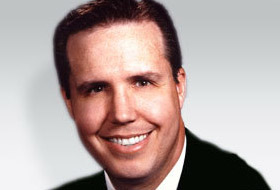WIRELESS SENSORS WIDENING THE MARKET

M2MAPPS: Monnit focuses on low-cost wireless sensors. When and why did you decide to specialize in this part of the value chain?
BRAD WALTERS: I’d been a successful serial entrepreneur and investor and around August 2008 I was looking around for a new opportunity. At that time wireless sensors were large and they cost around 500 hundred dollars, but it was clear that there was a huge market opportunity for products that could be battery-powered and would cost a lot less: around 50 dollars. When Texas Instruments came out with a low-cost, low-power RF/microprocessor system on a chip later that year 2008 I saw that what had been a gaping hole in the market could be filled, so together with my business partner Nick Mecham we formed Monnit.
M2MAPPS: How did the market react?
BRAD WALTERS: The vendor side didn’t. Much to my surprise nobody else came out with a similar product, but I was convinced that a technology that would enable battery-powered, wireless sensors to transmit at line-of-sight distances of 900 feet and indoors up to 300 feet had to be a winner. I should add that TI gave us a good price, which meant that we came out with an interesting value proposition. Our first sensor sold well and since then we’ve never looked back. Right now we have over thirty different types and more are being added at regular intervals.
M2MAPPS: Did this chip-set development open up new applications areas? Did it widen the market?
BRAD WALTERS: We didn’t want to market products to end users so we developed sensor kits for solution providers and they opened up the market. In the beginning they were kicking in an open door. For example, an early application was developed to monitor water levels in household basements and start the sump pump when there is a potential problem and stop the pump when it has been resolved. Very simple but effective and it sold a lot of sensors.
M2MAPPS: Does that mean that the sensors drive application development into new areas?
BRAD WALTERS: It does. I believe that the most prolific m2m apps are waiting to be discovered and one area will come from apps that are based on sets of collaborating sensors. We anticipated this development by commissioning a gateway that can accommodate up to 100 sensors. The gateway aggregates the data, which the app analyses and processes into information on which decisions can be made. Let’s take a very simple, hypothetical example. One sensor measures temperature, another senses the presence of water. If the temperature falls below 32 degrees (0 degrees Centigrade) and water is present then the application will indicate the presence of ice.
M2MAPPS: How do you enable connectivity to cellular networks?
BRAD WALTERS: We needed a gateway and couldn’t find a product with the right spec and we didn’t want to market m2m hardware so we had one developed. The company we chose had a contractual agreement with iMetrik Global, whose network provides instant access in over 120 countries through 170 GSM operators. This enabled the development of a gateway that could be shipped pre-activated on the network, which allowed solutions to be used right out of the box. A simple concept but very effective.
M2MAPPS: You’ve got a wide range of regular sensors that measure physical parameters like temperature and humidity but can you give examples of other less obvious uses.
BRAD WALTERS: We’ve got so many that it’s hard to know where to start. We’re working on a caller ID sensor/data aggregator that detects incoming phone calls on any landline phone and sends the caller ID information to a concerned person via SMS text or email. More and more elderly people are staying at home and they can become targets for cold callers who are pushing unwanted services and products, which causes confusion. Or they may be scams. The caller ID is monitored along with other information like time and duration and this information is sent to a relative or healthcare worker.
M2MAPPS: Last question: what developments do you expect to see in 2013?
BRAD WALTERS: The adoption of wireless sensing is exploding across all segments and I’m confident that the best is yet to come. For example, MEMS (Micro Electric Machining Systems) is an exciting development and this is the way the world of sensors is going. And a commercial development that you won’t see but it will be there, is the white label deployment of our products.
Company: Monnit
Monnit is a leader in the design and manufacturing of turnkey, self-installing, low cost wireless sensor solutions targeted at the commercial, industrial and consumer markets. Monnit’s sensing solutions are designed to be easily installed and used by anyone wanting to remotely monitor information and activities, including: temperature, access, presence of water, light, humidity, and vibration in or around structures, machinery, and various environments.
